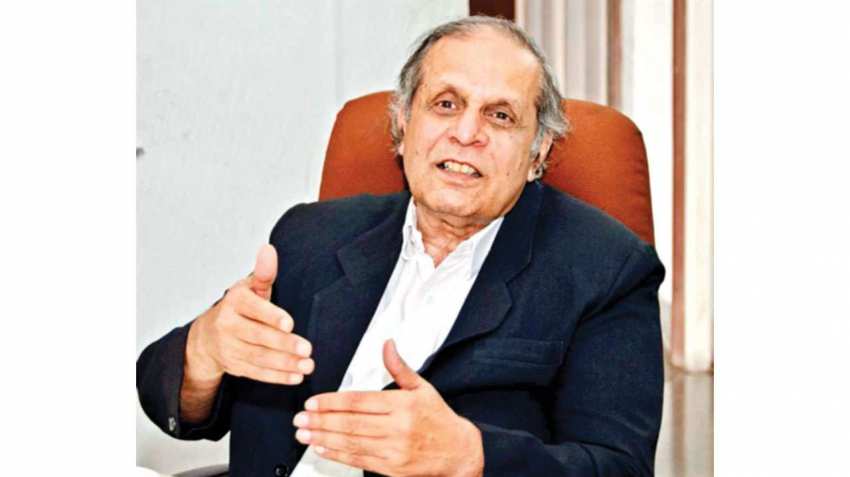Tata Motors Nano car in US? See what iconic Luna maker Arun Firodia said
Luna, which was meant as a vehicle between bicycle and motorcycle, was launched in the early 1970s was ubiquitous on the country’s roads till the 1990s. Later, Kinetic Honda (JV with Japan’s Honda Motors) became a money generating product for the company during the 90s. Kinetic Group, headed by Firodia, which later parted with its joint venture partner Honda Motors in 1998, further sold a majority stake to Mahindra & Mahindra (M&M) in 2008, giving the latter an entry into the two-wheeler segment.

Arun Firodia, chairman of Kinetic Group, who is credited with success of iconic brands - India’s first moped Luna and automatic scooter Kinetic Honda, believes that Tata Motors’s small car Nano can still be successful if it is exported to markets like the US and positioned as a student’s car or something similar.
Speaking at a conference to announce his company’s tie-up with some of the global super bike brands in Mumbai on Thursday, Firodia said while Luna was meant for common man and Kinetic Honda was targeted at women commuters, they did not advertise it so. “We never said that. Otherwise, it could have been a disaster,” Firodia said. Instead the company marketed Luna as, “Luna takes you faster” while Kinetic Honda was projected as a “family vehicle”, Firodia said.
Offering a perspective to it, Firodia cited the example of Nano, which was touted as world’s cheapest car. Though the car garnered tremendous interests at all the global automobile events, it failed to make a mark with the customers. “Tatas said Nano is for the common man. However, the common man said if I drive a scooter or a car, I will still be a common man. So Nano never tasted the success,” Firodia said.
According to a Zion market research report, the US education market was valued at around $1,350 billion in the year 2017 and it is expected to reach approximately $2,040 billion by 2026. The US education market is expected to exhibit a CAGR of more than 4.5% between 2018 and 2026.
Luna, which was meant as a vehicle between bicycle and motorcycle, was launched in the early 1970s was ubiquitous on the country’s roads till the 1990s. Later, Kinetic Honda (JV with Japan’s Honda Motors) became a money generating product for the company during the 90s. Kinetic Group, headed by Firodia, which later parted with its joint venture partner Honda Motors in 1998, further sold a majority stake to Mahindra & Mahindra (M&M) in 2008, giving the latter an entry into the two-wheeler segment.
As per statistics available with the lobby group Society of Indian Automobile Manufacturers (SIAM), the moped segment grew by 2.84% during the period from April-August 2018 over April-August 2017. On the other hand, scooters, which is the fastest growing segment within two-wheelers, grew 6.77% during the same period.
Meanwhile, Kinetic’s Motoroyale, which claims itself to be the country’s first multi-brand super bike company on Thursday announced three further global tie-ups with SWM, FB Mondial, Hyosung. The company had earlier associated itself with MV Agusta and Norton in 2016 and 2017, respectively. Seven new super bikes across the price point ranging from Rs 3.37-23.70 lakh were launched.
Watch this Zee Business video
According to Ajinkya Firodia, MD, Motoroyale, the market size of super bikes in India is over 10,000 units (leaving out Royal Enfield and KTM) and his company expects to sell over 2,500 units within a year. Further, around Rs 30 crore has already been invested in the business and there are plans to raise about Rs 100 crore form PE investors.
Source: DNA Money
10:35 AM IST






 Flying car PAL-V to be built in Gujarat, MoU inked with Dutch firm
Flying car PAL-V to be built in Gujarat, MoU inked with Dutch firm Auto dealers fear they will not be able to liquidate BS-IV stock before March 31 deadline: FADA
Auto dealers fear they will not be able to liquidate BS-IV stock before March 31 deadline: FADA Maruti WagonR S-CNG, BS6 compliant, variant launched; price starts at Rs 5.25 lakh
Maruti WagonR S-CNG, BS6 compliant, variant launched; price starts at Rs 5.25 lakh 60 per cent Lamborghini owners paying EMIs; hardly any CEOs on buyers' list
60 per cent Lamborghini owners paying EMIs; hardly any CEOs on buyers' list Tata Harrier BS VI bookings start; here is how much you need to pay
Tata Harrier BS VI bookings start; here is how much you need to pay